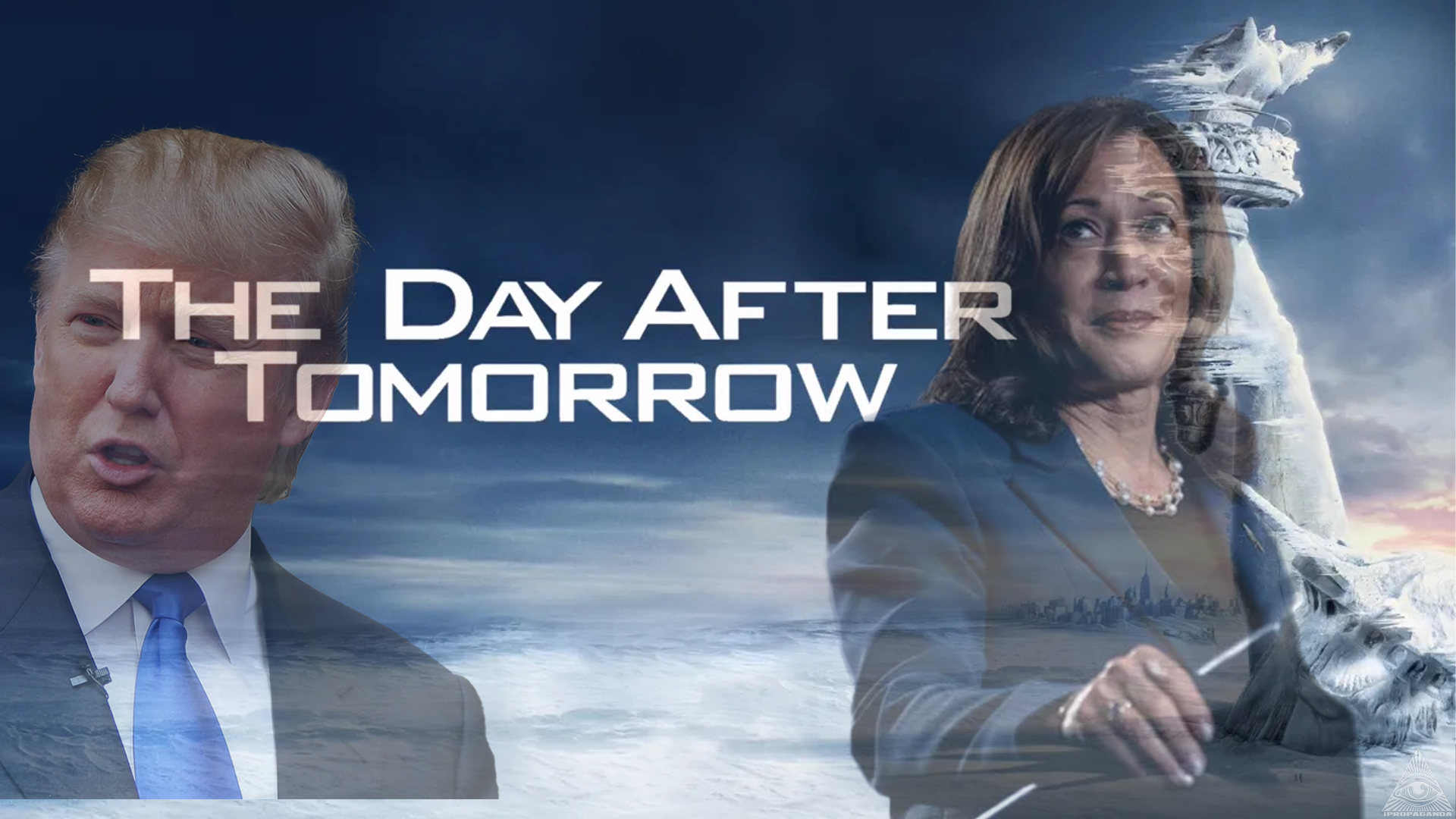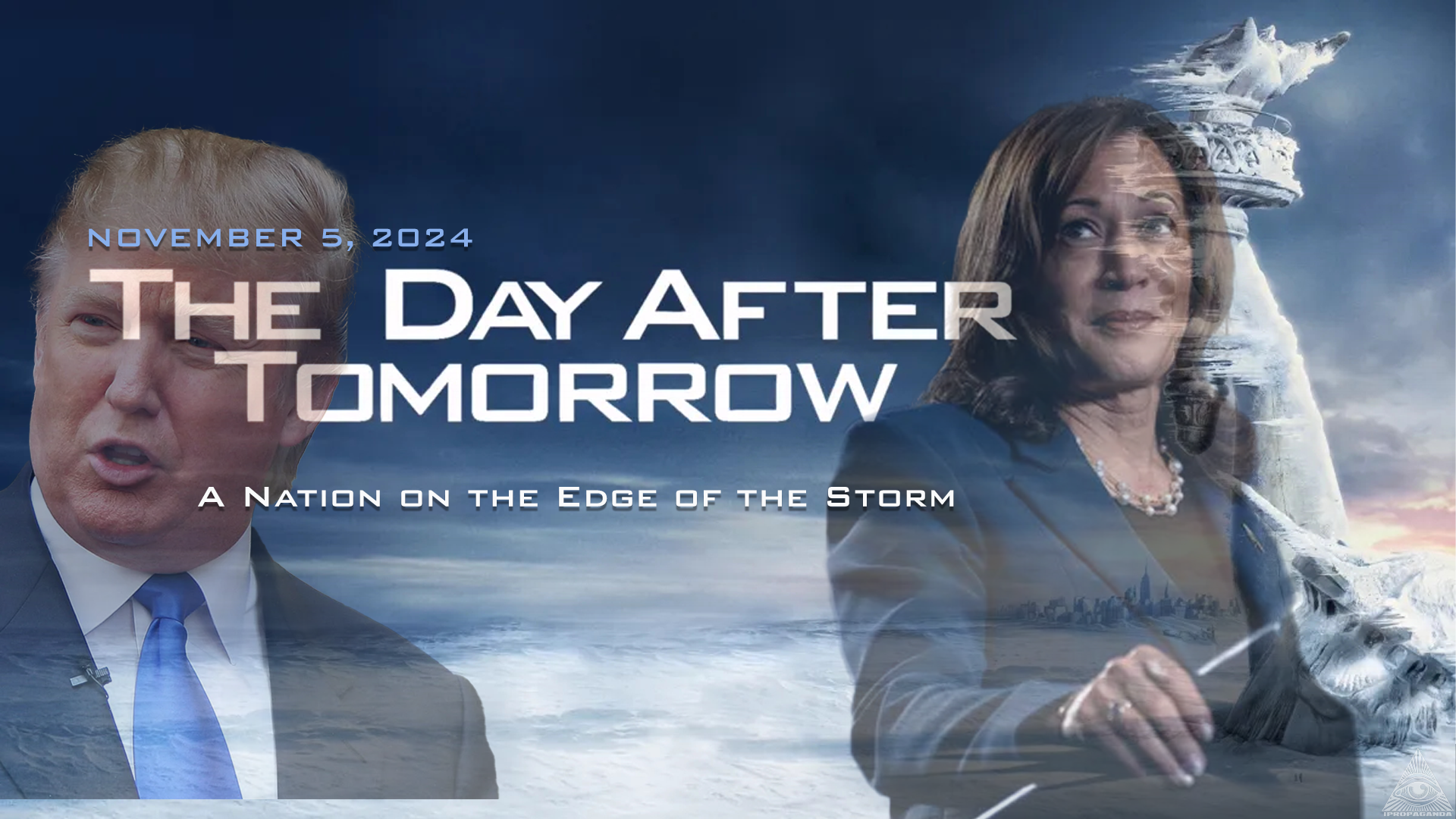

A Trump Victory and The Day After Tomorrow
We finds itself in familiar yet uncharted waters as another Trump campaign gains traction, underscoring how we’ve reached this political precipice. With Trump’s signature populist appeal and divisive rhetoric, we are once again reminded of The Day After Tomorrow, where the global climate shifts with unimaginable speed, leaving the world devastated and forcing society to confront uncomfortable truths. The movie serves as an apt metaphor for a potential Trump victory—an event that, while inevitable for some and avoidable for others, has the potential to transform the political landscape in ways we can only partially anticipate. However, just as the movie shows the resilience of the human spirit, we too can find hope, clarity, and agency amid the political storm.
The Current Political Climate—Building Toward the Storm
The buildup to this point has been years in the making. Trump’s campaign, once dismissed as a political outlier, has reshaped the core of American politics. In the years following his 2016 election, the national political discourse shifted dramatically, embracing a more polarizing and personality-driven landscape. Supporters see in Trump an unyielding force against “the system,” while opponents worry about the erosion of democratic norms. Much like the signs of an impending storm in The Day After Tomorrow, the elements of division, misinformation, and public disillusionment have intensified to create an environment ripe for upheaval.
Trump’s platform, as in the past, is defined by his embrace of populist themes that resonate deeply with a segment of the American public—many of whom feel alienated from Washington politics. His strategy draws heavily on emotional appeal, often at the expense of factual accuracy, tapping into widespread frustrations about economic and cultural shifts that have left many feeling marginalized. By positioning himself as the answer to these grievances, he solidifies his base and creates a movement that views his re-election as a necessary reckoning with a broken system.
The Day After Tomorrow as a Metaphor for a Trump Victory
In The Day After Tomorrow, a relentless series of natural disasters erupts as a direct consequence of ignoring the scientific and environmental signs. Cities freeze overnight, storms rage with unprecedented fury, and the world is forced to reckon with the results of years of neglect and denial. Similarly, a Trump victory could be seen as the climactic event in a political environment that has long ignored the symptoms of polarization, wealth inequality, and the disenfranchisement of middle- and working-class Americans.
A Trump victory could feel, to some, like the tidal wave that hits New York City in the movie, sweeping through the nation with a force that no one is fully prepared for. It would represent the country’s susceptibility to extreme shifts in governance, the prioritization of personality over policy, and the deeper, unresolved tensions that simmer beneath the surface. The victory, while significant in its immediate implications, symbolizes an even larger challenge: an increasingly volatile democracy that, like the damaged planet in The Day After Tomorrow, struggles to function in its traditional ways.
Lessons From the Storm
While the movie portrays a devastating scenario, it also underscores the resilience of human nature. In the face of chaos, people come together, re-evaluating their priorities and recognizing their shared humanity. Political storms, much like environmental ones, offer an opportunity for growth and change—often at a considerable cost but also with potential for redemption.
Trump’s rise and potential victory serve as a wake-up call to politicians and citizens alike. Rather than resigning ourselves to the storm, this political moment is a chance to address the systemic issues that allowed it to happen in the first place. This involves facing hard truths about economic inequalities, ideological divides, and a media landscape that increasingly prioritizes sensationalism over substance. The movement that Trump has galvanized reflects real frustrations, but addressing these requires commitment from leaders willing to work for systemic change rather than temporary fixes.
One of the clearest lessons from both The Day After Tomorrow and the current political landscape is the need for urgency in addressing issues before they reach a breaking point. While we may not be able to predict or control every political outcome, we can work to build a more inclusive, fair, and transparent system. This includes making voting accessible, prioritizing educational reforms that encourage critical thinking, and promoting media literacy to help citizens discern fact from fiction.
An Alternative Future: Kamala Harris as President
In contrast, consider a future where Kamala Harris emerges victorious, offering a path that not only averts the storm but also sets a course toward national healing and renewal. Harris represents a unique possibility—a blend of experience, advocacy, and a vision rooted in equity. Her administration could usher in an era focused on rebuilding trust in democratic institutions and emphasizing solutions to issues that have long been neglected, from healthcare reform and environmental policy to criminal justice and racial equity.
With Harris in the Oval Office, we could expect an approach prioritizing inclusivity and transparency, countering the often adversarial stance that has defined recent political exchanges. Harris has shown an inclination toward coalition-building, a skill essential in bridging the divides that plague the nation. By addressing systemic inequalities, emphasizing criminal justice reform, and creating avenues for educational and economic advancement, her leadership could help reverse years of growing mistrust in the political system.
A Harris victory would also mean a substantial focus on climate action. Recognizing the urgency highlighted by both science and catastrophic weather events worldwide, a Harris administration would likely spearhead aggressive policies aimed at reducing carbon emissions, promoting green energy, and working internationally to combat climate change. This commitment would not only align with the demands of younger generations but also position the U.S. as a global leader in sustainability—an approach that could be the antidote to the destruction we see in The Day After Tomorrow.
A Path Forward Amid Uncertainty
Even as we face the metaphorical storm, there are reasons to hope. The challenges of today have led to a more politically engaged population, with voters across demographics pushing for a more equitable society. Movements centered on climate action, racial justice, and economic reform continue to gain traction, underscoring the public’s demand for substantive change. These movements remind us that no matter the immediate political outcome, the public remains a formidable force capable of pushing for progress.
Just as the characters in The Day After Tomorrow ultimately face the storm head-on and begin rebuilding, we too can emerge from political turbulence with renewed focus and purpose. Instead of being swept away by divisive rhetoric, we have the power to shape our future, hold our leaders accountable, and work toward a society that honors democratic principles. The storm is not the end but a call to action—to confront our past, acknowledge our failings, and pursue a better, more unified future.
Conclusion: Emerging Stronger Together
The prospect of a Trump victory, like the devastating storm in The Day After Tomorrow, is both sobering and clarifying. It forces us to reckon with the reality that our democracy is not immune to the forces of division, disinformation, and distrust. However, with the potential of a Kamala Harris presidency, we see a glimmer of hope, a path to transformation without the need for a cataclysmic reckoning.
We are not merely passive observers of this political climate; we are active participants with the power to influence outcomes. The divisions that have defined recent years need not dictate the future. If we recognize the signs, heed the warnings, and prioritize a government that serves all, we can build a society resilient to future storms. In either outcome, we have the choice to emerge from this political moment with a renewed commitment to unity, understanding, and the democratic ideals that have weathered so many storms before.
